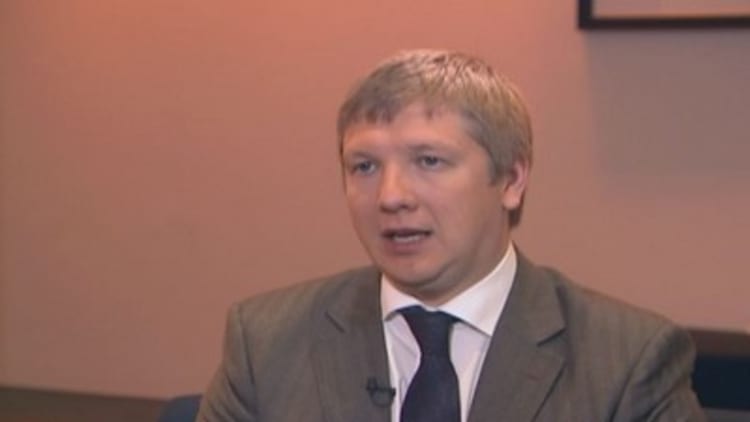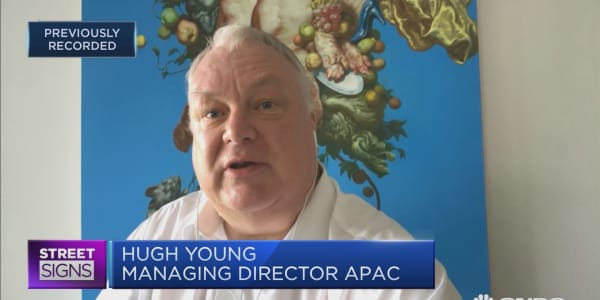
As Russia and China continue to forge trade pacts, including the huge $456 billion gas deal with Russian state-owned energy giant Gazprom signed in May, many Westerners are wondering whether this cozy relationship between the two nations is anything to be concerned about.
"Right now China's biggest goal is to deflate American dominance, and what better way than to partner with Russia?" said David Silverstein, a global business consultant whose clients include Siemens, Philips and Credit Suisse. "The biggest risk is to the U.S. dollar."
The fact that the 30-year Gazprom deal was transacted in a currency swap denominated in yuan—the first time an energy deal circumvented the dollar—is a red flag, according to Silverstein. "If the dollar loses its dominance in international commerce, its value will plummet. That would create a tipping point for the U.S. economy overnight."
He noted that China, in its quest for resources to fuel its large economy, has engineered other yuan currency swaps. Among them: a $30 billion swap with Brazil in March to bolster BRICs countries and an $11 billion swap with Argentina announced last month to help the Latin nation bolster its foreign reserves.
Putin's pivot to the east
"Geopolitical forces are catalyzing the growing ties between Russia and China," said Steve Orlins, president of the National Committee on U.S.-China relations. Plunging oil prices and economic sanctions imposed on Russia by Western countries, in the light of the conflict in Ukraine, have slowed down its economic growth. At the same time, foreign investors have pulled around $96 billion out of Russia this year, the Institute of International Finance has reported. The IMF said the Russian economy is in recession and forecasts GDP growth to just 0.2 percent for 2014.
In response, Russian President Vladimir Putin has turned to his rival to the east, granting China access to its raw materials and advanced weapons. With the ruble near a record low—it hit 40.885 on Tuesday—and foreign investment dwindling, Chinese cash can fill the void.
According to Russia's Bureau of Statistics, trade between Russia and China amounted to more than $59 billion so far this year in sectors ranging from energy to finance to technology. Right now the Russia-China relationship is a marriage of convenience. Russia cannot rely on the West as its primary market for energy, and East Asia presents a perfect opportunity for Russia to fill its energy exports, explained senior Eurasia analyst at Stratfor, Lauren Goodrich.
A delegation led by Premier Li Keqiang signed a package of deals on Oct. 13 in Moscow. Among them was an agreement to swap $25 billion in Chinese yuan for Russian rubles over three years, and cooperation on satellite navigation systems and high-speed rail. They also plan to build the first rail bridge over their common border and an ice-free port in Russia's Far East.
The ties are also spilling over to arms sales. Reuters has reported that it is likely Russia will sign contracts for the delivery of the S-400 missile systems and Su-35 fighter jets to China next year. It is also possible that Russia may supply China with its newest submarine, the Amur 1650.
This kind of collaboration is the latest in a flurry of joint ventures and cross-border transactions between the two strategic allies. Other agreements include a large contract for engineering work on the Novatek-led Yamal LNG project in Russia.
In September 2013, China National Petroleum bought a 20 percent stake in OAO Novatek's $20 billion liquefied natural gas project.
China-Russia deal flow
| Deal | Date | Value (million USD) | What is it? |
|---|---|---|---|
| CNOOC Yamal LNG | Jul-14 | 1,600 | a large contract for engineering work on the Novatek-led Yamal LNG project in Russia. |
| China Russia Gas Deal | May-14 | 400,000 | Twenty-seven commercial contracts between Russia and China for the total worth about 15 billion U.S. dollars have been signed in the format of the Russian-Chinese trade and investment forum |
| CNPC Yamal Stake | Sep-13 | N/A | China National Petroleum Corp. bought a 20 percent stake in OAO Novatek’s $20 billion Yamal liquefied natural gas project |
| Rosneft China Oil | Sep-13 | 270,000 | Russia's Rosneft (ROSN.MM) agreed a $270 billion deal to double oil supplies to China on Friday, as the Kremlin energy champion shifts its focus to Asia from saturated and crisis-hit European markets. The deal, one of the biggest ever in the history of the global oil industry, will bring Rosneft $60-70 billion in upfront pre-payment from China, the holders of the world's largest foreign exchange reserves. |
| China Loans to Russian Banks | Jun-13 | 1,900 | Russia State Corporation Bank for Development and Foreign Economic Affairs signed three loan agreements with its Chinese partners during the 18th regular meeting of Chinese and Russia prime ministers, involving USD 1.9 billion. |
| China investment in Russia coal | Oct-13 | 2,000 | Under the strategic cooperation framework agreed upon by the three parties, China Development Bank will provide funding of up to US$ 2 billion to En+ Group and Shenhua Group to develop coal resources and the related infrastructure in Eastern Siberia and the Far East region of Russia. |
| CDB and Sberbank | Mar-13 | 2,000 | China Development Bank Corp. and OAO Sberbank of Russia have entered into an approximately US$2 billion agreement aimed at enhancing financial cooperation between China and Russia |
| 27 Commercial Agreements | Dec-12 | 15,000 | Twenty-seven commercial contracts between Russia and China for the total worth about 15 billion U.S. dollars have been signed in the format of the Russian-Chinese trade and investment forum |
| China Russia Investment Fund | Oct-11 | 1,000 | China's sovereign-wealth fund agreed to invest $1 billion in a Kremlin-backed investment vehicle during a visit by Russian Prime Minister Vladimir Putin. China Investment Corp.'s agreement marks the first commitment by an investor to the Russian Direct Investment Fund, a private-equity vehicle set up in June by Mr. Putin and President Dmitry Medvedev as a way to spur foreign investment in Russia |
Source: Source: CNBC.com, Stratfor
The risk quotient
Geopolitical experts and economists have mixed views on the China-Russia relationship. While some say the United States should be very concerned about the growing ties between Russia and China, others say the publicly punctuated friendship is just political bluff.
Gordon Chang, author of "The Coming Collapse of China," has been covering the region for almost two decades. According to him, a China-Russia alliance is America's No. 1 foreign policy challenge. "The United States has not had to confront two peer competitors since the end of World War II, and we have not faced a united China and Russia since the last days of the 1950s," Chang said.
"They are, in deeply troubling ways, changing the world by shaking the foundations of an order that has ensured the absence of major conflict and paved the way for unprecedented prosperity."
Chang believes that the growing cooperation between the two countries will only serve to escalate tensions with the United States, with both Russia and China finding less incentive to cooperate with America.
Johns Hopkins University fellow Donald Jensen echoed those sentiments. He noted: "China and Russia can leverage the global community against the U.S. and Europe, either through vetoes at the United Nations or by using energy as a weapon."
Jensen said China has huge leverage in the global economic order and is trying to overturn it, at least in the monetary sense.
"Both are interested in a multipolar world instead of the U.S. dictating the international sphere," Stratfor's Goodrich said. "Neither Moscow nor Beijing can challenge the U.S. on their own, but together they might."
Political bluff
Many experts agree that the warming of relations between Russia and China is an opportunistic ploy mainly for economic reasons.
But Edward Mermelstein, an attorney who works as an advisor on cross-border investments in the Russian Federation, said that the idea that these two countries can rely on one another from an economic perspective is "a recipe for disaster."
"The limited disengagement from the West has thrown the Russian economy into a tailspin and will continue to decimate the ruble," Mermelstein told CNBC.
The U.S. dollar is up 6.6 percent against the ruble in the past month. So far this year, it is up 24.5 percent. The U.S. dollar hit a multiyear high of 41.16 rubles per dollar on October 16, according to Reuters data that dates back to 1995.
"The idea that China can replace the West as an economic alternative is not realistic," Mermelstein said. The European Union still remains Russia's biggest trading partner.
Future prospects
Considering the trend, corporate America is trying to assess the risk to its interests in China and Russia. Eurasia Group president Ian Bremmer describes a 'cold war on business' and points out that the United States should pay close attention to what he calls the unwinding of business ties with Russia and China as China cracks down on Fortune 500 companies. He expects that escalating tensions with Russia will continue.
"As China and Russia pivot toward each other, American businesses—and their universal economic values—will struggle to maintain a global foothold," Bremmer wrote.
Only time will tell if there will be a major rebalance in geopolitics and global trade due to the strengthening alliance between China and Russia. Chang sums it up nicely: "If they do in fact form an enduring partnership, it could mean the end of the post–Cold War era. What follows next, for better or worse, will surely be momentous."
—Additional reporting by Lori Ioannou, senior editor, CNBC.com





